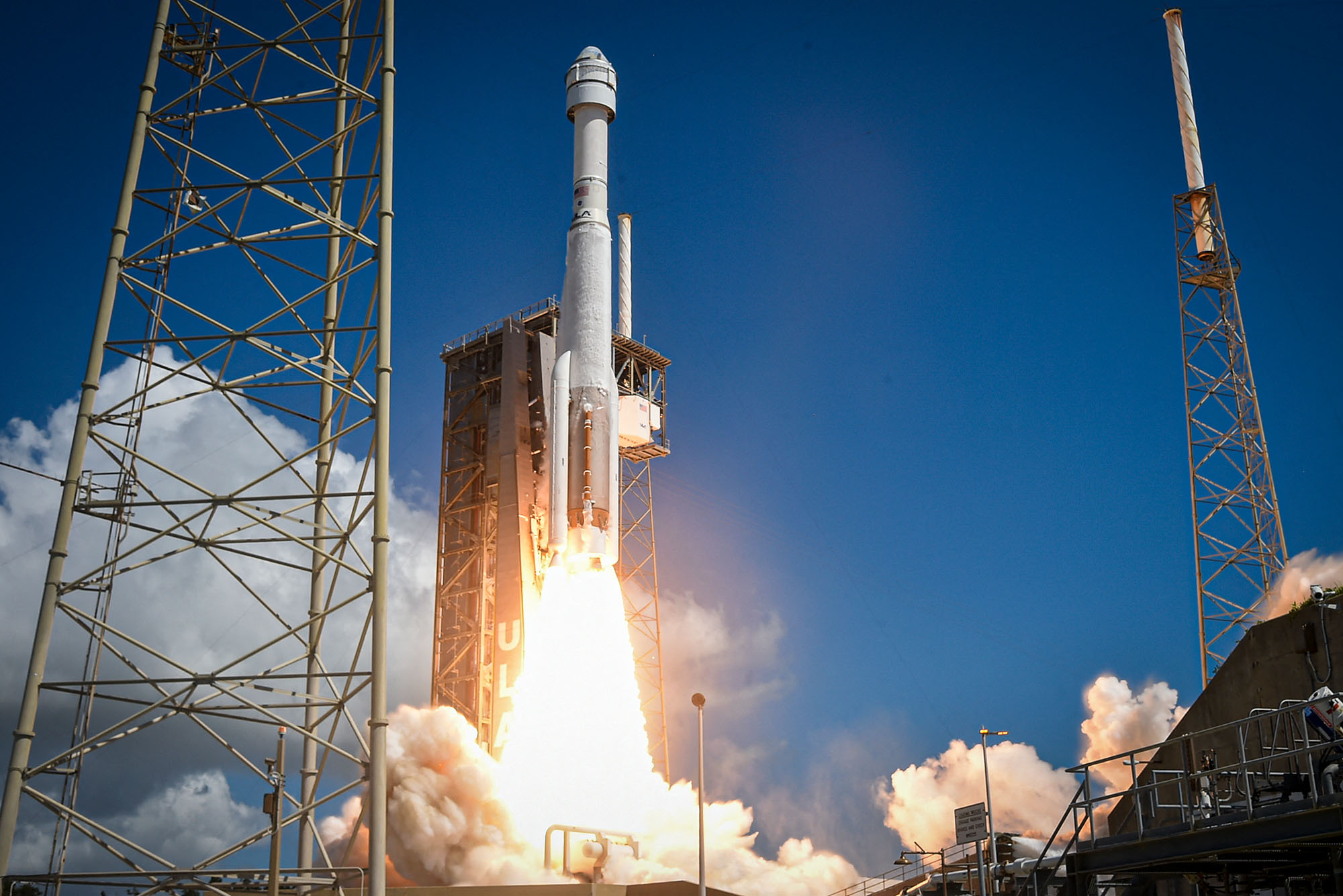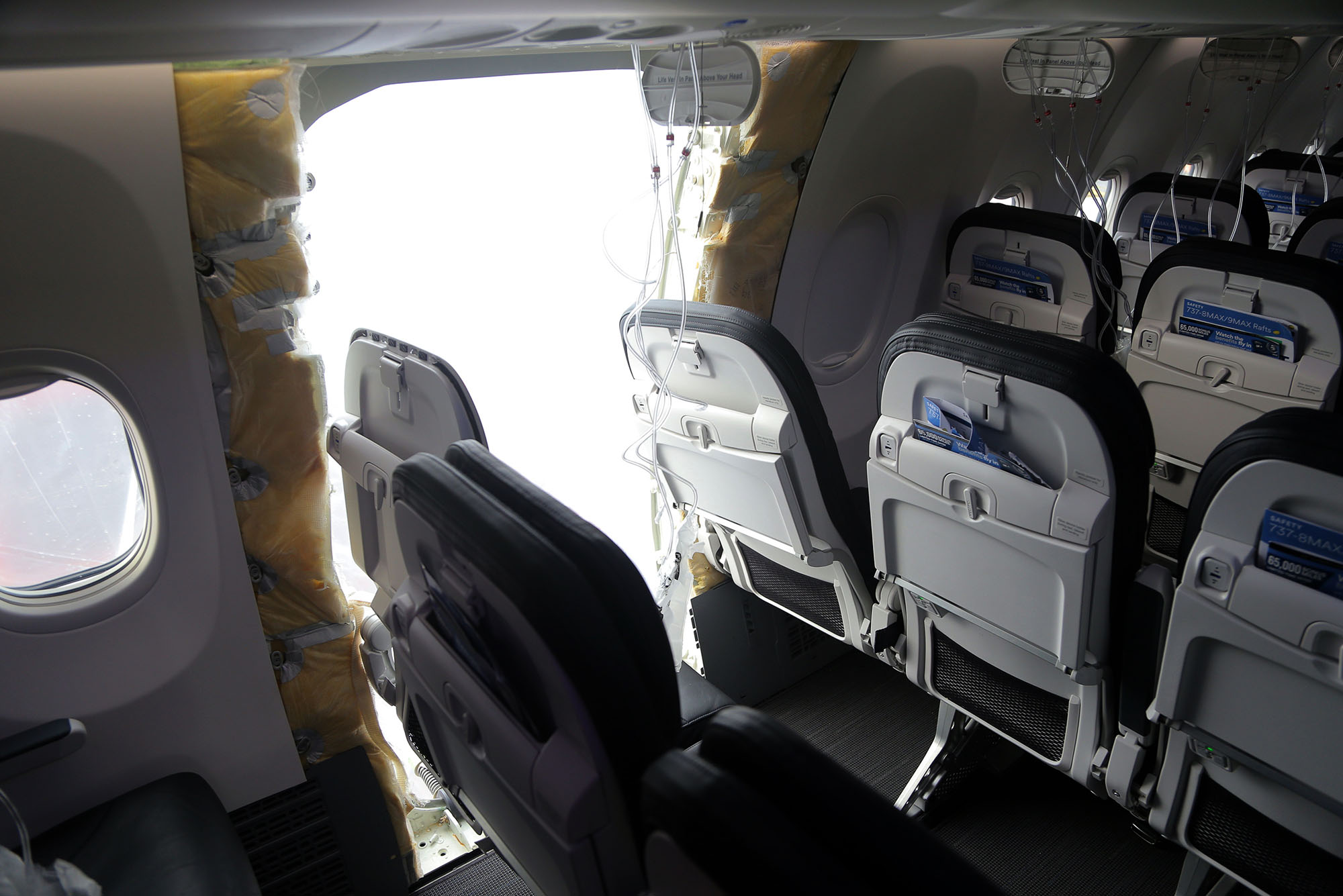BU Experts on Boeing’s Legal and Technical Troubles
Crashes, technical problems, and legal scandals have become a nightmare for storied aerospace company

Concerns about thrusters on Boeing’s Starliner spacecraft (launched on a rocket here in June) left two astronauts without a ride home from the International Space Station. Photo via Getty Images/Miguel J. Rodriguez Carrillo/AFP
BU Experts on Boeing’s Legal and Technical Troubles
Crashes, technical problems, and legal scandals have become a nightmare for storied aerospace company
It’s an embarrassing start to the new year when a wall panel blows off one of your airplanes mid-flight. But then Boeing’s problems just kept piling up—lost wheels, a falling engine cover, an engine failure—and even extended beyond this world, when astronauts were left stuck on the International Space Station because of malfunctioning thrusters on the company’s Starliner spacecraft.
And when Boeing forked out $244 million and pleaded guilty in July to federal fraud charges stemming from two plane crashes that killed 346 people, its mishaps plunged it neck-deep in public doubt: can these people fly safely, let alone on time?
“Boeing’s recent troubles can be used as a case study for many different issues covered in the Questrom curriculum. There are so many different angles, it’s hard to know where to begin,” says Keith Ericson, a professor and chair of markets, public policy, and law at the Boston University Questrom School of Business. Boeing’s recent history, he says, carries lessons for just about every part of running a business: quality control, good management, company culture, public relations, and more.
Boeing’s recent troubles can be used as a case study for many different issues covered in the Questrom curriculum. There are so many different angles, it’s hard to know where to begin.
The recovery of a storied firm like Boeing—one of the original Fortune 500 companies that’s still on the list, with $78 billion in revenue last year—begins with a cultural shake-up, BU experts say.
The latest setback for the Virginia-based aerospace, defense, and plane-making giant was the guilty plea, growing out of the 737 MAX 8 crashes in 2018 and 2019 in Indonesia and Ethiopia. The government alleged fraud because Boeing assured the Federal Aviation Administration that new software supposedly required relaxed training standards for pilots. The Justice Department is running a separate, criminal investigation into the January wall panel blowout on an Alaska Airlines 737 MAX 9.

Those prepandemic crashes threaten the company with future consequences, potentially drying up valuable contracts with the US Defense Department and NASA. (Although the latter’s astronauts may soon be coming home, as Boeing and the government say that the thruster problem that left them stuck in space has been fixed.)
“It took six months for Boeing to take any responsibility for the [737 MAX 8] crashes,” says Patricia Hambrick, a Questrom master lecturer in marketing. Boeing at first said a flight stabilizing system “played a role” in the crashes, she says, only to have it revealed as the cause. “Internal emails showed that employees inside Boeing knew of the malfunction of this feature,” she says. “The emails were written in a way that showed disagreement between teams and disrespect for one another.”
Hambrick says Boeing has a cultural problem.
“They have lost their focus on building quality airplanes, focusing on safety first,” she says. “The culture is toxic, with employees fighting amongst themselves and covering up mishaps.”
Boeing has a cultural problem. They have lost their focus on building quality airplanes, focusing on safety first.
Whether that cultural collapse results from boardroom turnover—the company has had five CEOs in two decades—or competitive pressures, Hambrick says recovery requires Boeing “to consistently build quality products, with safety first, and when a crisis happens, as it is bound to do, approach it with honesty and concern for the victims.”
Amy Shanler (CAS’96, COM’96,’04), a professor of the practice of public relations at the BU College of Communication, agrees. “A crisis is often a symptom of larger organizational dysfunction,” she says. “An organization’s underlying culture and operational structure can lead to faulty decision-making and the prioritization of profits over people, the environment, and ethical behavior.”
A crisis is often a symptom of larger organizational dysfunction.
Shanler, who is also associate chair of mass communication, advertising, and public relations, says that underlying rot explains why Boeing has suffered serial disasters rather than the misfortune of a single mishap. “When one crisis may appear to be resolved, the conditions in which the crisis arose still persist,” she says, “therefore making the organization vulnerable to further problems.” She argues that Boeing must do no less than “fundamentally transform itself to begin the process of repairing its reputation and relationships.”
Among other things, that means replacing problematic leaders, she says, even given Boeing’s revolving CEO door. (The company’s current CEO announced his resignation after the Alaska Airlines incident. Boeing’s new CEO will be Kelly Ortberg, described by Axios as “an outside hire and aerospace industry veteran [who] could lead to a crucial shift in Boeing’s culture.”) Beyond that, Shanler says, “the organization needs to empower its employees to do the right thing, share information, and address small issues before they balloon into larger crises. From a cultural standpoint, the organization needs to embrace learning, reward those who challenge the status quo and escalate issues, and listen to its stakeholders.”
Ericson, whose scholarly expertise includes organizational fragmentation, says Boeing has a big problem in that area. “Like many businesses, Boeing faces many make-or-buy decisions: should it make this part in-house, or buy it from a supplier? Having firms specialize has benefits—each firm can be focused on what it’s doing. But it also has costs—the difficulty of coordination across different organizations. Boeing chose to buy and contract with Spirit AeroSystems for the key door plug part that was not secured correctly and blew out” on the Alaska Airlines flight.
“There’s evidence of communication issues and conflict between Boeing and Spirit,” Ericson says. “It seems that Boeing got that make-or-buy decision wrong. Now, rather than buy parts from Spirit AeroSystems, Boeing has decided to buy Spirit AeroSystems and bring that production in-house.”
After all Boeing’s safety issues, that’s a smart move, he says: “It’s important that aircraft manufacturers have the right incentives for safety. It’s a difficult problem in general, and even harder when responsibility is diffused across different firms.”

Comments & Discussion
Boston University moderates comments to facilitate an informed, substantive, civil conversation. Abusive, profane, self-promotional, misleading, incoherent or off-topic comments will be rejected. Moderators are staffed during regular business hours (EST) and can only accept comments written in English. Statistics or facts must include a citation or a link to the citation.